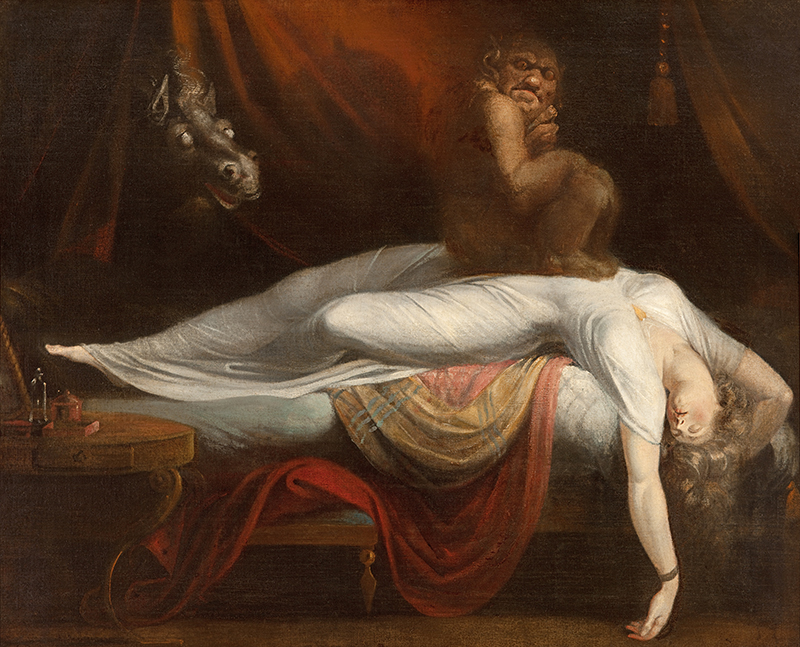Sleep paralysis is a state in which a person is aware but temporarily unable to move or speak when falling asleep or upon awakening. This state lasts only a few seconds to minutes, but it can be terrifying. Sleep paralysis is often a symptom of narcolepsy , an ongoing condition marked by excessive sleepiness. Sleep paralysis without narcolepsy is referred to as isolated sleep paralysis. Sleep paralysis often occurs during daytime naps or when a person is jet-lagged or otherwise deprived of sleep. Jet lag is a travel-related condition in which the natural cycles of sleep and other biological functions become disrupted after crossing multiple time zones.
Common sensations that occur during sleep paralysis include out-of-body experiences. Such experiences involve the feeling of floating outside one’s body or looking down upon oneself from above. Another common and frightening occurrence is the sensation that another person is in the room. This figure may appear as a dark shadow, or the paralyzed person might simply sense a malevolent (unfriendly) presence. The subject may also dream an intruder with detailed features, such as a demon , a witch , or a creature with sharp teeth and cat-eyes. In the sleep paralyzed state, a person may have the feeling of being attacked, choked, or suffocated by the intruder.
Cause.
Sleep paralysis happens when a person wakes while still in a stage of sleep called r_apid _e_ye _m_ovement (REM) sleep. REM sleep is the stage of sleep in which vivid dreams occur. During REM sleep, a part of the brain called the _dorsolateral prefrontal cortex becomes inactive. This portion of the brain is central in the ability to plan and think logically. It is this inactivity that enables the fantastic things that occur in dreams to seem real.
During REM sleep, the body is paralyzed by the brain. This paralysis prevents the person from being hurt by acting out or moving while dreaming. Sometimes, however, people do wake up while the brain is still in the REM state. This occurrence may leave the person stuck in a borderline state of consciousness between sleep and wakefulness while the body remains paralyzed. Occasionally during such sleep paralysis, the vivid and sometimes frightful or threatening dreams of REM sleep can intrude into waking consciousness. In effect, the person is dreaming with eyes open.
Occurrence.
Experts believe that around 20 to 40 percent of people experience isolated sleep paralysis at least once in their lives. The condition runs in families and is common in all cultures throughout the world.
Cultural significance.
Sleep paralysis and its effects are rooted in folklore related to nightmares . The term nightmare comes from the Old English word mare, a kind of female evil spirit or goblin . In European folklore , this spirit was said to sit on a person’s chest during sleep, causing bad dreams.
In Italy, sleep paralysis has sometimes been seen as an assault by the pandafeche, beings described as witches or catlike creatures. In Newfoundland, it is referred to as an old-hag attack. Among Egyptians, some believe sleep paralysis to be caused by supernatural creatures known as jinn . In the United States, sleep paralysis may be responsible for some reports of abduction by extraterrestrials . 
